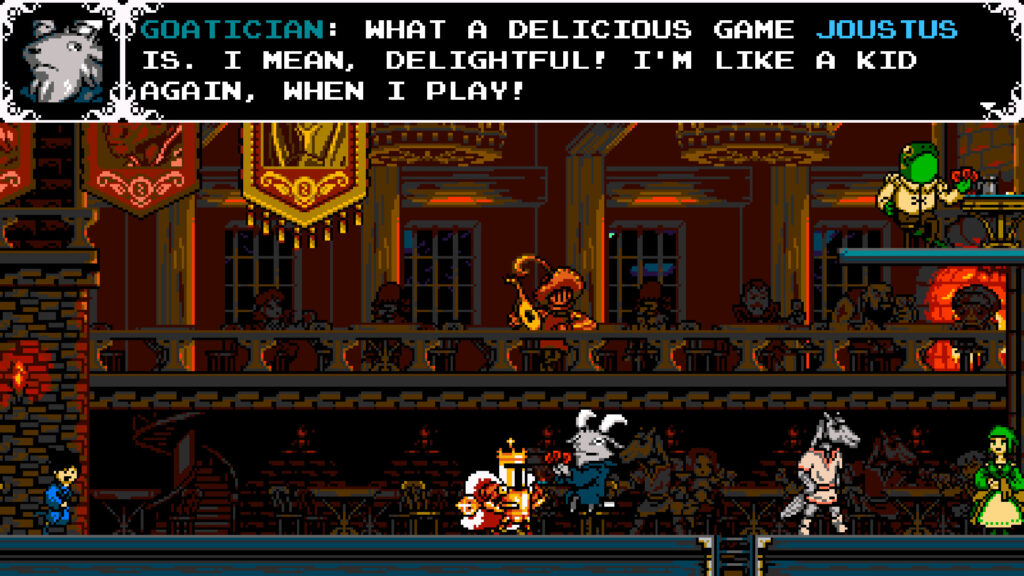Retro games have become more popular than ever, increasing interest in everything old.
The abundance of nostalgia, casual and arcade games on iOS and Android devices is a sign that old-school games are back.
What do we mean when we talk about “retro” games? There is no concrete definition for this, but we can usually say that we are talking about games made before 1990. Examples of this are GameBoy, NES, Commodore 64, and classic arcade games such as Pac-Man, Spacewar!, and Space Invaders.

The importance of graphics
The importance of graphics is undeniable. Improvements in graphics quality are one of the reasons video games have become more and more addictive over the years. The desire to play every new game that comes out is not only because it has an even more complex story than the last game you played or the development of the plots, but also the unrealistic visual pleasure you experience in each game, which takes you directly into the depths of the game and makes you connect like crazy to the controller.

The video game’s graphics allow you to see the world the game developer thought of when he came up with the concept. An alternate reality is provided, and as the graphics get better, players engage with the game even more.
For example, there has been a recent surge in retro-inspired graphics in video games. Due to the way they are designed, they remind of the past and manage to attract the user’s attention. Rest assured, the appeal of nostalgia and time travel through video games is substantial.
In short, the graphics seal the connection between the game and the player. They appeal to the players’ eyes, allowing their emotions and other senses to be addressed more effectively.
Three core meanings of video game aesthetics
The research divides the term “game aesthetics” into three meanings. In short, game aesthetics is about the senses, art, and specific experiences. These sets of definitions are presented as follows:
Game aesthetics refers to the sensory phenomena that the player encounters in the game (visual, auditory, tactile, embodied)
According to the taxonomy created by the Carnegie Mellon Entertainment Technology Center, Aesthetics is concerned with how a game looks, sounds, and presents itself to the player. This includes visual aesthetics. Graphical innovation affects the way a game is perceived visually. Aesthetics reflects the etymological roots of the Greek word aisthesis.
Gaming aesthetics refers to digital games’ aspects that are shared with other art forms.
Digital games are compared to other media and art forms in certain conditions, purposes, content, themes, and designs. From this perspective, the authors ask, “Are video games art?” asks the question. These debates continue even today.
Game aesthetics, the game’s pleasure, emotion, sociability, shaping, and so on. (aesthetic experience) is an expression of experienced.
According to this understanding, plays can be considered works that create an aesthetic experience. The somewhat open-ended nature of this experience has attracted many writers who describe the aesthetic experience of a game as “fun” in some cases and “pleasure” in others. The former president of the American Association for Education and Development, Academician Kirkpatrick, identifies aesthetic experience with “the play of imaginative and cognitive faculties” based on Immanuel Kant.
New Retro trend
New Retro is a term used for retro genre games that have been released in recent years. This style can manifest itself in aesthetics and gameplay (limited control options, etc.). There is also an increase in the popularity of these games in the games that use the New Retro style. Indie video game developers are pioneering the genre because of their efforts to capture a different tone in the games they make.
Using simplified graphics, developers gain the ability to spark the player’s imagination, create interest and clarity. One game that exemplifies this New Retro approach to game design is Shovel Knight, developed by Yacht Club Games. This game model the look and sounds of a game that could have existed nearly 30 years ago. The mechanics and gameplay of the game are completely simplified. At the same time, the graphics and sounds belong to the old generation games.

You will need to work with a limited number of colors to create a convincing retro look. Old-style game consoles could only display a limited number of colors. Depending on the system, graphics were shown in black and white, grayscale, 8 or 16-bit color. We’re not facing the hardware limitations we’ve met in the past, but keeping your palette limited to a few carefully chosen colors will not only emphasize the retro aesthetic but will also help create the identity of your game.





